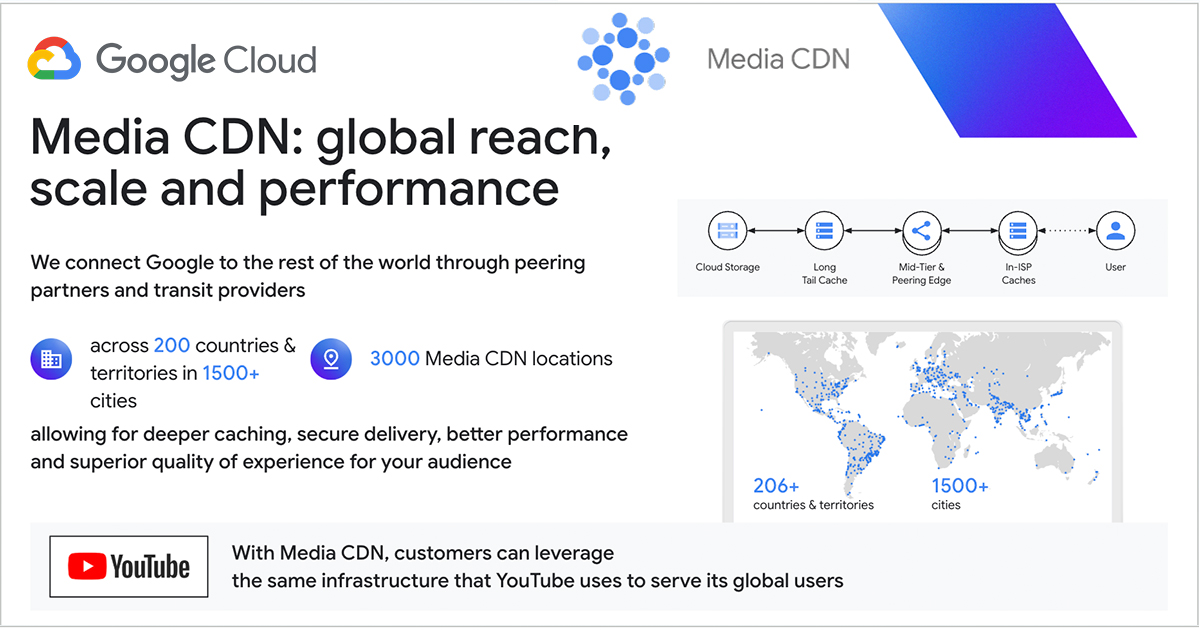Google’s Media CDN Hits 100Tbps of Capacity, Targets VOD and Large File Downloads

Google has been pretty quiet about its Media CDN offering, but that’s changing as the company has signed multiple large M&E customers and added more capacity and new functionality. The company has allowed me to disclose that Google Media CDN has over 100Tbps of egress capacity and growing. Not to be confused with Google Cloud CDN, which is for web acceleration, Google’s Media CDN service leverages the same infrastructure that YouTube uses to serve its global users.
Google’s Media CDN service targets customers with high-volume media and large file downloads, as well as support for live streaming when it makes sense. Google’s support for live video prioritizes customers who commit to a specific level of sustained traffic. This is a smart business decision since even the largest live events when measured by concurrent users, don’t drive much revenue but consume a lot of network capacity. Google targets customers prioritizing low latency for live, high origin offload for VOD, and maximum throughput for downloads. For VOD, Google says their cache hit ratios average ~98.5-99% and for live, ~96.5-98.5%.
Google Media CDN leverages Google’s edge network, which is present in over 3,179 locations worldwide and offers origin protection by default. This doesn’t mean that Google’s Media CDN service is deployed in 3,000 locations, but the Media CDN team can add capacity across specific locations based on customer needs, leveraging Google’s massive network footprint. Google Media CDN also supports edge programmability, enabling custom logic for services like header manipulation, token authentication etc., directly within the request path.
Later this quarter, Google Media CDN will add Flexible Shielding, enhancing flexibility for customers with centralized origins serving global audiences. This service allows customers to configure specific shield node locations for optimized performance and offload. Customers can also add Google’s Cloud Armor service for WAF and DDoS protection at the edge. Google Media CDN offers near real-time logging and metrics integrated into Google’s Cloud operations suite (Cloud Logging, Cloud Monitoring) and provides ready-to-use dashboards. Its metrics include server-side metrics (TTFB, TTLB, Cache Status, Origin Latency) and client-side insights via full support for CMCD.
Google shared a list of client names using their Media CDN for streaming and software downloads, but I don’t have permission to mention most of them. I previously disclosed that WBD uses Google Media CDN in their multi-CDN deployment, and last week, Google added a testimony with MLB on their use of Google Media CDN, which you can see here. Google already has relationships with large M&E customers using Google’s Cloud stack, so over time, I expect its Media CDN offering to be added into the mix for customers using a multi-CDN approach for streaming and large object downloads.
